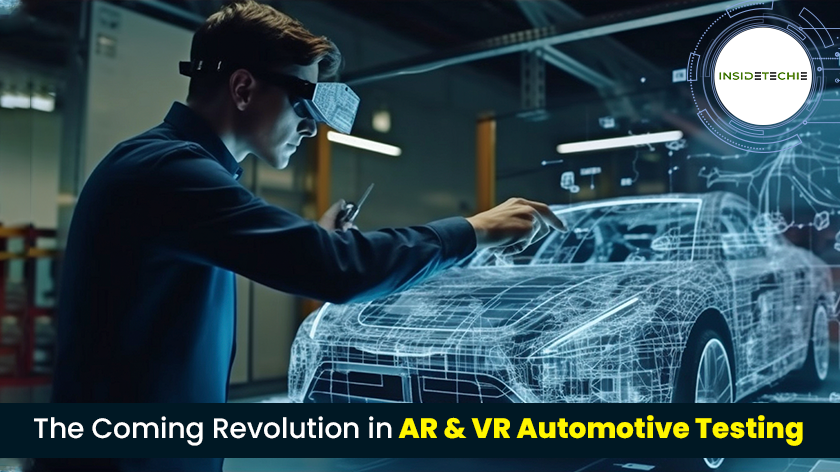Over the last few years, virtual reality and augmented reality technology have gained significant traction, especially after Meta CEO Mark Zuckerberg unveiled plans to build a metaverse in 2021.
Introduction to AR/VR Testing in Automotive Technology:
AR and VR technologies have altered the way we engage with digital information, creating immersive and engaging experiences. As these technologies evolve, assuring the dependability, performance, and satisfaction of users of AR and VR applications becomes increasingly important. Because of the dynamic and three-dimensional nature of the experiences they provide, testing these applications is a challenging task. Artificial intelligence (AI) is rapidly being used to improve and automate the testing procedures connected with AR and VR apps.
What is AR and VR ?
AR is a technology that overlays digital information over the actual world, such as photographs, text, or 3D models. It improves the user’s experience of reality by including contextual and interactive digital components.
VR is a technology that immerses people in a computer-generated, virtual environment. It produces a wholly virtual and frequently interactive experience, moving people from the actual world to a computer-generated one.
AR/VR testing covers compatibility and full-stack functionality. It also takes into account security and usability. Maintainability, performance, and a new factor called “immersiveness” are all critical. AR/VR is a new way to combine the virtual and physical worlds. The user must experience this immersive experience.
New technology for testing AR and VR will be developed:
1. AI-driven Test Automation:
Continued advancements in artificial intelligence will lead to more sophisticated test automation tools capable of handling complex scenarios in AR and VR environments.
2. Gesture and Emotion Recognition Testing:
Testing tools may incorporate advanced gesture and emotion recognition capabilities, enabling comprehensive assessments of user interactions and emotional responses within AR/VR applications.
3. Simulated Environments with Real-World Variables:
Future testing technologies might simulate real-world variables like lighting conditions, weather, and user movements to create more realistic testing environments for AR/VR applications.
4. Quantum Computing for Simulation:
As quantum computing matures, it could be leveraged to simulate highly complex and realistic virtual environments for more accurate testing of AR and VR applications.
5. Neurotechnology Integration:
Integration of neurotechnology could allow for direct monitoring of brain responses, providing insights into user experiences and helping developers optimize AR/VR applications for cognitive comfort.
6. Blockchain for Security Testing:
Blockchain technology might be employed for secure storage and verification of AR/VR application testing data, ensuring data integrity and confidentiality during the testing process.
7. 5G Connectivity for Remote Testing:
The widespread adoption of 5G networks could enable seamless remote testing of AR/VR applications with low latency, allowing testers to experience and evaluate applications from different locations.
8. Quantifiable User Experience Metrics:
Enhanced metrics for quantifying user experiences, such as immersion levels, comfort indices, and fatigue measurements, could become standard in AR/VR testing.
9. Biometric Feedback Integration:
Future testing tools might integrate biometric feedback, such as heart rate and pupil dilation, to assess physiological responses and tailor AR/VR experiences accordingly.
10. Edge Computing for Real-Time Processing:
Edge computing could be utilized to process data closer to the testing environment, reducing latency and enabling real-time analysis of AR and VR applications during testing.
Conclusion
Future advances in AR/VR testing technologies could result in better user interfaces, more compatible devices, and smoother integration across a range of sectors. Further developments should lead to more reliable testing techniques, more realistic simulations, and wider use in industries like entertainment, healthcare, and education. But in order for the technology to realise its full potential, issues like standardisation and ethical considerations must also be resolved.












